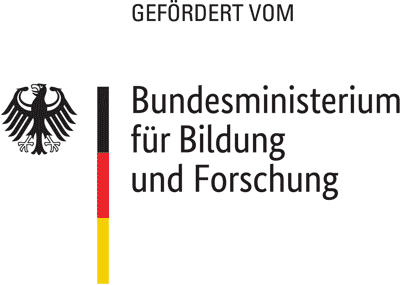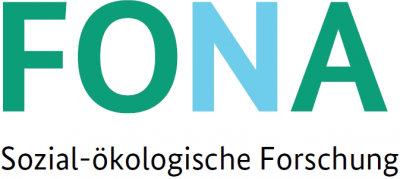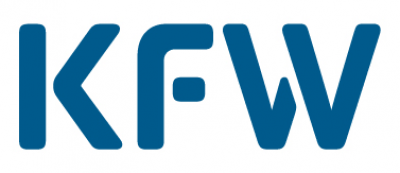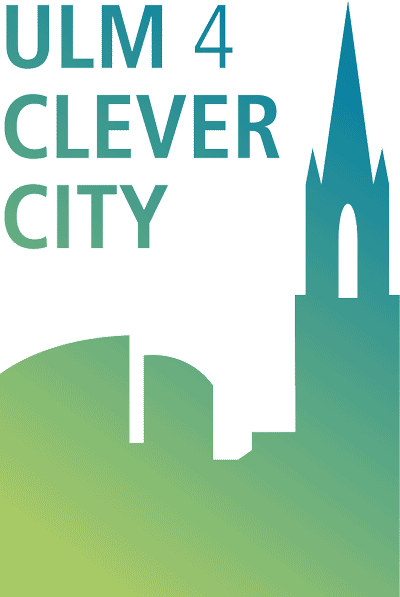Spannende Beispiele für Open Data | Interresting examples of Open Data

Deutsche Version
STADTLEBEN (PARTIZIPATIVE PROJEKTE)
Meine Stadt Transparent: https://meine-stadt-transparent.de/
Wie funktioniert's?
Die Seite ermöglicht es, die öffentlichen Informationen aus einem städtischen Ratsinformationssystem modern und benutzerfreundlich aufzubereiten. Mit einer zentralen Suche lässt sich die gesamte Seite - Sitzungsvorlagen, Tagesordnungen, usw. - im Volltext durchsuchen, genauso wie gewählte Stadtratsmitglieder oder Ausschüsse. Um auch dauerhaft auf dem Laufenden zu bleiben, bietet „Meine Stadt Transparent“ verschiedene Anschlusspunkte: Nutzer können sich E-Mail-Benachrichtigungen anlegen, die über neue Dokumente zu abonnierten Suchbegriffen informieren. Termine und Terminreihen lassen sich per iCal in eigene Kalendersysteme einbetten, aktuelle Sitzungsdokumente lassen sich auch im eigenen RSS-Reader lesen. Die zugehörige Software ist Open Source und kann von jedem genutzt und für beliebige Städte angepasst werden.
Was ist der Zweck?
„Wir wollen Stadtpolitik für alle verständlich machen.“ (Autoren des Projektes)
Welche offenen Daten werden verwendet?
Daten aus städtischen Ratsinformationssystemen
Offener Haushalt: https://offenerhaushalt.de
Wie funktioniert's?
In Deutschland müssen kommunale Haushaltspläne veröffentlicht werden, allerdings werden sie in der Regel in Form von PDFs veröffentlicht. Somit sind die Inhalte schwer weiter zu verarbeiten, um Inhalte bspw. in Grafiken darzustellen. Mit offenen Daten im CSV-Format lassen sich hingegen zügig Visualisierungen erstellen, die den Haushalt graphisch erschließen https://offenerhaushalt.de/haushalt/NW/Moers/#/einzelplane?Betrag_Typ=Plan&HH%20Art=Aufwendungen&Jahr=2017
Was ist der Zweck?
OffenerHaushalt.de trägt dazu bei, dass Bürger ein klareres Bild über die Finanzen ihrer Kommune bekommen und somit besser am politischen Diskurs teilnehmen können. Die Visualisierung und Erklärung von Haushaltsplänen ist dabei nur der erste Schritt auf dem Weg zu einer transparenten und partizipativen Finanzpolitik. Deshalb fordern wir, dass sämtliche Haushaltsdaten maschinenlesbar (z.B. als CSV-Datei) zur Weiterverwendung veröffentlicht werden.
Welche offenen Daten werden verwendet?
Finanzdaten von Kommunen, Ländern, Bund.
Ist deine Stadt eine 15-Minuten-Stadt? : https://15-minuten-stadt.de/
Wie funktioniert's?
Das Konzept der 15-Minuten-Stadt kommt aus dem stadtplanerischen Kontext. Auf einer Karte wird gezeigt, welche Stationen des Alltags in einer Stadt in 15 Minuten erreichbar sind. Dabei wird auf eine umweltfreundliche Fortbewegung geachtet: Die Strecken werden zu Fuß, mit dem Fahrrad oder dem ÖPNV zurückgelegt.
Was ist der Zweck?
Mit dem Tool kann man Städte und Stadtteile miteinander vergleichen und so sehen, wie gut die wichtigsten Bereiche des Lebens von dort zu erreichen sind. Das Projekt zeigt auch, wo es heute schon möglich ist oder bald möglich werden könnte, Autoverkehr massiv zu reduzieren und so Klima und Umwelt zu schonen, ohne auf Lebensqualität zu verzichten. Darüber hinaus wird schnell ersichtlich, wo noch Nachholbedarf ist. Die Software funktioniert für beliebige Städte, vorausgesetzt es die dafür notwendigen Daten liegen als offene Daten vor.
Welche offenen Daten werden verwendet?
Die Daten für die Berechnungen stammen überwiegend aus der freien Weltkarte OpenStreetMap. Diese Datengrundlage kann von allen eingesehen, genutzt, überprüft und verbessert werden.
Wo ist Markt? https://wo-ist-markt.de/#karlsruhe
Wie funktioniert's?
Auf der Webseite werden die Wochenmärkte, Gemüsemärkte und Trödelmärkte verschiedener Städte in Deutschland angezeigt. Es gibt folgende Funktionen: Stadt im Aufklappmenü auswählen; Märkte zeitlich filtern (jetzt, heute, alle); Über Marktdetails und Marktzeiten informieren; Datenquelle und letzte Aktualisierung nachsehen, Quellcode der Webanwendung aufrufen. Die Webseite ist sowohl für die Darstellung auf Smartphones und Tablets als auch auf Desktop-Browsern optimiert. Die Marktdaten werden manuell eingepflegt. In jeder Stadt muss es mindestens eine Person geben, die die Daten initial zusammenträgt und dann aktuell hält. Aus diesem Grund sind auch nur die Marktdaten bestimmter Städte abrufbar.
Was ist der Zweck?
Immer wissen, wann und wo es frische und lokale Lebensmittel zu kaufen gibt.
Welche offenen Daten werden verwendet?
OpenStreetMap, Öffentliche Informationen der Stadtverwaltung zu Marktzeiten.
KLIMASCHUTZ/KLIMAWANDEL (PARTIZIPATIVE PROJEKTE)
Ernte teilen https://ernte-teilen.org/karte/#/
Wie funktioniert's?
Ernte-teilen.org bietet eine Plattform an, die Landwirte*innen und Verbraucher*innen, die sich an Solidarischer Landwirtschaft beteiligen möchten, zusammenfinden lässt. Ein Hof oder eine Gärtnerei versorgt eine Gruppe von Menschen in der näheren Umgebung mit Lebensmitteln. Im Gegenzug stellt die Gruppe die nötigen Mittel für die Lebensmittelerzeugung zur Verfügung. Alle Beteiligten teilen sich die Verantwortung, das Risiko, die Kosten und die Ernte: fair, ökologisch, nachhaltig.
Was ist der Zweck?
Durch den persönlichen Bezug zueinander erfahren sowohl die Erzeuger*innen als auch die Verbraucher*innen die vielfältigen Vorteile einer nicht-industriellen, marktunabhängigen Landwirtschaft.
Welche offenen Daten werden verwendet?
Geodaten der Höfe, die Angebote anbieten, Information zum Angebot, Details zur Zusammenarbeit mit den Landwirten
Gieß den Kiez https://www.giessdenkiez.de/
Wie funktioniert's?
Auf der Plattform können sich Besucher*innen über Bäume in ihrer Nachbarschaft in der Stadt Berlin und deren Wasserbedarf informieren, einzelne Bäume adoptieren und markieren, wenn sie diese gegossen haben. Geolokalisierung: Mit einem Klick auf das Icon am unteren linken Bildschirmrand zum eigenen Standort navigieren. Map-Layout: Die Hintergrundkarte erstrahlt in neuen Farben und zeigt Hausnummern & ÖPNV-Haltestelle. Mit dem Baum-Routing verfügt nun jeder Baum über einen ganz persönlichen Link, der sich mit Gieß-Freund:innen oder Grünflächenämtern teilen lässt.
Was ist der Zweck?
Die Berliner Stadtbäume leiden unter Trockenheit. Gieß den Kiez wurde geschaffen, um eine koordinierte Bürger*innenbeteiligung bei der Bewässerung von Stadtbäumen zu ermöglichen.
Welche offenen Daten werden verwendet?
Offene Daten der Stadt Berlin aus dem Baumkataster, Daten aus der freien Weltkarte OpenStreetMap
Klimawatch https://klimawatch.de/
Wie funktioniert's? Die Seite funktioniert als partizipatives Projekt. Bürger*innen sammeln Informationen aus den Klimabilanzen ihrer Städte und Web-Entwickler*innen visualisieren. Eine Grafik zeigt, wie schnell eine Kommune ihre CO2-Emissionen senken müsste, um das Pariser Abkommen zum Klimaschutz zu erfüllen.
Was ist der Zweck? Sensibilisierung der Öffentlichkeit für die Situation und den Beitrag ihrer Stadt zur Eindämmung des Klimawandels. Aktivierung des persönlichen Engagements von Bürger*innen, die in Zukunft zur Lösung des Problems beitragen möchten.
Welche offenen Daten werden verwendet? Daten zu Emissionen von Städten aus Ratsinformationssystemen, Energie- und Klimabilanzen der Städte in Deutschland, Forschungsdaten zu pro Kopf Emissions-bedarfen und Globalen Emissionsszenarien
GESUNDHEIT/COVID-19
COVID-19 - Impftermine in Deutschland https://www.xn--impfterminbersicht-v6b.de/
Wie funktioniert's?
Die Impfterminübersicht zeigt alle freien Impftermine in Deutschland.
Die Suche erfolgt durch Auswahl der Altersgruppe und Region, in der die Impfung durchgeführt werden soll. Besucher*innen können die Impftermin Übersicht App installieren, um Benachrichtigungen zu erhalten, sobald Impftermine verfügbar sind.
Was ist der Zweck?
Erleichterung und Beschleunigung des Impfprozesses, indem schnell freie Impftermine in der Nähe ersichtlich sind.
Welche offenen Daten werden verwendet?
Offene Daten von RKI und Arztpraxen
NACHHALTIGER TOURISMUS
TransportApp: CityMapper https://citymapper.com/
Wie funktioniert's?
CityMapper bietet intermodale Mobilitätslösungen: also die Verknüpfung von verschiedensten Verkehrsmitteln, um eine Wegstrecke zurück zu legen.
Was ist der Zweck?
Möglichst einfach von A nach B kommen. Und zwar auf eine möglichst unkompliziert und gleichzeitig vielfältige Art und Weise.
Welche offenen Daten werden verwendet?
Offen Daten zu Fahrplänen und Standorte verschiedenster Fahrzeuge
KOSTENLOSES WISSEN UND KULTURELLE INHALTE FÜR ALLE
Europeana (metadata) https://classic.europeana.eu/portal/de/collections/art
Wie funktioniert's?
Europeana bietet den Menschen Zugang zu mehr als 45 Millionen digitalisierten Objekten aus Europas Museen, Bibliotheken, Archiven und audiovisuellen Sammlungen. Europeana fungiert als zentrale Anlaufstelle für den Zugang zu kulturellen Objekten (Bücher, Museumsobjekte, Gemälde, Filme und Archivalien), die in ganz Europa digitalisiert wurden.
Was ist der Zweck?
Wissen teilen, Kultur populär machen! Für Kulturerbe-Institutionen ist Europeana eine Gelegenheit, ihre Sichtbarkeit zu erhöhen, was zu einer Steigerung ihres Web-Traffics, einer besseren Nutzererfahrung und neuen Partnerschaften führen wird.
Welche offenen Daten werden verwendet?
Die Informationen, die auf Europeana zu finden sind, stammen von kulturellen und wissenschaftlichen Einrichtungen in Europa. Es handelt sich um Bilder, Videos, 3D-Kunst, Texte, Tonaufnahmen u.v.m
English version
CITY LIFE (PARTICIPATIVE PROJECTS)
My City Transparent: https://meine-stadt-transparent.de/
How does it work?
The site allows public information from a city council information system to be presented in a modern and user-friendly way. With a central search, the entire site - meetings templates, agendas, etc. - can be searched in full text, as well as elected city council members or committees. In order to stay permanently up to date, “My City Transparent" offers various connection points: Users can set up e-mail notifications that inform them about new documents related to subscribed search terms. Appointments and appointment series can be embedded in own calendar systems via iCal, and current meeting documents can also be read in the user's own RSS reader. The associated software is open source and can be used by anyone and adapted for any city.
What is the purpose?
"We want to make city politics understandable for everyone." (Authors of the project)
What open data is used?
Data from city council information systems.
Open budget: https://offenerhaushalt.de
How does it work?
In Germany, municipal budgets have to be published, but they are usually published as PDFs. This makes it difficult to further process the content, e.g. to display it in graphics. With open data in CSV format, on the other hand, it is possible to quickly create visualizations that make the budget graphically accessible: https://offenerhaushalt.de/haushalt/NW/Moers/#/einzelplane?Betrag_Typ=Plan&HH%20Art=Aufwendungen&Jahr=2017
What is the purpose?
OffenerHaushalt.de helps citizens get a clearer picture of their municipality's finances and thus better participate in political discourse. The visualization and explanation of budgets is only the first step on the way to a transparent and participatory financial policy. Therefore, “we demand that all budget data be published in a machine-readable form (e.g. as a CSV file) for further use”. (Authors of the project)
What open data is used?
Financial data from municipalities, states, federal government.
Is your city a 15-minute city? https://15-minuten-stadt.de/
How does it work?
The concept of the 15-minute city comes from the urban planning context. A map is used to show which everyday stops in a city can be reached in 15 minutes. Attention is paid to environmentally friendly transportation: The routes are covered on foot, by bicycle or by public transport.
What is the purpose?
The tool allows people to compare cities and neighbourhoods to see how easily the most important areas for everyday life can be reached from there. The project also shows where it is already possible today or could soon become possible to massively reduce car traffic and thus protect the climate and the environment without sacrificing quality of life. In addition, it quickly becomes apparent where there is still a need to catch up. The software works for any city, provided that the necessary data is available as open data.
Which open data is used?
The data for the calculations comes mainly from the free world map OpenStreetMap. This data base can be viewed, used, reviewed and improved by everyone.
Where is the Market? https://wo-ist-markt.de/#karlsruhe
How does it work?
The website displays the weekly food and flower markets, vegetable markets and flea markets of various cities in Germany. There are the following functions: Select city in the drop-down menu; Filter markets by time (now, today, all); Inform about market details and market times; Look up data source and last update, Call source code of the web application. The website is optimized for viewing on smartphones and tablets as well as desktop browsers. Market data is entered manually. In each city there must be at least one person who initially compiles the data and then keeps it up to date. For this reason, only the market data of certain cities can be accessed.
What is the purpose?
To always know when and where to buy fresh and local food.
What open data is used?
OpenStreetMap, Public information from the city government on market times.
CLIMATE PROTECTION / CLIMATE CHANGE (PARTICIPATIVE PROJECTS)
Share Harvest https://ernte-teilen.org/karte/#/
How does it work?
Ernte-teilen.org offers a platform that brings together farmers and consumers who want to participate in solidarity agriculture. A farm or market garden provides food to a group of people in the surrounding area. In return, the group provides the necessary resources for food production. All participants share the responsibility, the risk, the costs, and the harvest: fair, organic, sustainable.
What is the purpose?
By relating to each other personally, both producers and consumers experience the many benefits of non-industrial, non-market agriculture.
What open data is used?
Geodata of the farms that offer deals, information about the offer, details about the cooperation with the farmers.
Pour the Kiez/Neighbourhood https://www.giessdenkiez.de/
How does it work?
On the platform, visitors can find out about trees in their neighbourhood in the city of Berlin and their water needs, adopt individual trees and mark them when they have watered them. Geolocation: Navigate to your own location by clicking on the icon at the bottom left of the screen. Map layout: The background map shines in new colours and shows house numbers & public transport stop. With tree routing, each tree now has its own personal link that can be shared with watering friends or green space authorities.
What is the purpose?
Berlin's urban trees are suffering from drought. Watering the Kiez (neighbourhood) was created to enable coordinated citizen participation in watering city trees.
What open data is used?
Open data of the city of Berlin from the tree cadastre, data from the free world map OpenStreetMap.
Klimawatch https://klimawatch.de/
How does it work?
The site works as a participatory project. Citizens collect information from their cities' carbon footprints and web developers visualize. A graph shows how fast a municipality would have to reduce its CO2 emissions to comply with the Paris Agreement on climate protection.
What is the purpose?
Raising public awareness of their city's situation and contribution to mitigating climate change. Activating the personal engagement of citizens who want to contribute to solving the problem in the future.
What open data is used?
Data on city emissions from council information systems, energy and climate balances of cities in Germany, research data on per capita emission requirements and global emission scenarios.
HEALTH/COVID-19
COVID-19 - Vaccination Dates in Germany https://www.xn--impfterminbersicht-v6b.de/
How does it work?
The vaccination dates overview shows all free vaccination dates in Germany.
The search is done by selecting the age group and region in which the vaccination is to be carried out. Visitors can install the Impftermin Übersicht app to receive notifications as soon as vaccination appointments are available.
What is the purpose?
To facilitate and expedite the vaccination process by quickly seeing available vaccination appointments nearby.
What open data is used?
Open data from The Robert Koch Institute (Deutschland) and doctors' offices.
SUBSTAINABLE TOURISM
TransportApp CityMapper https://citymapper.com/
How does it work?
CityMapper offers intermodal mobility solutions: i.e. the linking of various means of transport to cover a distance.
What is the purpose?
To get from A to B as easily as possible. And in as uncomplicated and diverse a way as possible.
What open data is used?
Open data on timetables and locations of various vehicles.
FREE KNOWLEDGE AND CULTURAL CONTENT FOR ALL
Europeana (metadata) https://classic.europeana.eu/portal/de/collections/art
How does it work?
Europeana gives people access to more than 45 million digitized objects from Europe's museums, libraries, archives, and audio-visual collections. Europeana acts as a central point of contact for access to cultural objects (books, museum objects, paintings, films, and archival materials) that have been digitized across Europe.
What is the purpose?
Sharing knowledge, popularizing culture! For cultural heritage institutions, Europeana is an opportunity to increase their visibility, which will lead to an increase in their web traffic, a better user experience and new partnerships.
What open data is used?
The information found on Europeana comes from cultural and scientific institutions in Europe. The formats used are images, videos, 3D art, texts, sound recordings, and much more




